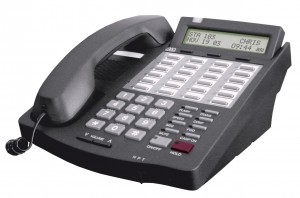 My good friend Jatinder Kapur shared this story on Facebook, which I thought was a must-share. Here is the story –
My good friend Jatinder Kapur shared this story on Facebook, which I thought was a must-share. Here is the story –
Several years ago, a single problem customer changed the fate of my company. Here’s the story.
In business, we’re often all about the numbers–occasionally to a fault. I’m not saying statistics and metrics aren’t useful tools. Sometimes, however, the success or failure of an enterprise comes down to individual interaction–say, a handshake or a phone call.
Let me give you a good example.
In 1995, I bootstrapped a tech company, Broadcast Software. We created digital audio and automation software for broadcast radio stations. After four years, we had 16 employees and customers in 40 countries.
But we were at a transition point. If companies need to grow or die, we were in need of a transfusion. We had grown beyond my ability to fund future growth out of my back pocket, and it was time to get outside capital. It also turned out to be time for the tech bubble to burst. Our potential funding sources instantly disappeared.
I was a hands-on CEO. I had written the original code and knew many of our customers personally. I had told my employees that the buck stopped with me, that I’d be willing to speak with any customer they couldn’t help or satisfy. If need be, they should even give out my personal number.
Challenging Customer
So when my cell phone vibrated at 2 a.m. on a Sunday morning, I recognized the 618 area as Southern Illinois. That meant the caller was Bob, a crusty old-time radio engineer and owner of a very small rural radio station near Mt. Vernon. He’d purchased one of our systems several months before and had been struggling to get it up and running.
Bob’s biggest problem was that he’d never even used a computer before. My support manager more than once had recommended that we just refund Bob’s money. But we’d marketed our products as easy to use, so we couldn’t abandon someone because they’d found otherwise.
I climbed out of bed, closed the door behind me, and spent the next two hours coaching Bob on how to configure the start-up options for Microsoft Windows. It wasn’t an issue with our software, but it was a problem for our customer, Bob–which made it our problem. At the end of the conversation, I thought we’d made a lot of progress. Bob was enthusiastic. I was hopeful.
That was the last anyone heard from Bob. He didn’t call tech support. He didn’t call me. As time passed, I wondered whether we’d actually fixed the problem or whether he’d just given up. I made a mental note to check in on him as soon as I’d figured out the bigger financial issues.
Surprise Windfall
One situation was about to solve the other. Almost six months to the day after I’d hung up the phone with Bob, I received another call. The chief of engineering of a major media company informed me the company had decided to standardize on our software across its entire chain of more than 300 radio stations. It would be the biggest order in our history–more than $4 million–and would easily provide the capital we’d been needing.
The call was a complete surprise. We’d not pursued their business. In fact, it had been public knowledge that they were selecting one of our competitors. As it turned out, the reason for their mid-course change was … Bob.
That phone call with Bob saved our company. He hadn’t given up on us; he loved us. Shortly after my call with him, the same media giant made an offer he couldn’t refuse to purchase his radio station, and Bob had stayed on as a consulting engineer.
An Internal Champion
Not long after, a company meeting centered on their intentions to purchase our competitors’ products. Bob had raised his hand at the back of the room: “Have you ever heard of Broadcast Software?” he asked. He told his new colleagues the story of our phone call, and how we’d stuck with him for months even when the problems weren’t really ours. Over lunch, and then dinner, Bob sang our praises. At the end of the evening, he scribbled our website and contact info on cocktail napkin and handed it to the chief of engineering. “Check these guys out,” he said. “They’re great.”
They did, and the rest was history. Our history.
There’s a moral to the story: Every customer needs to be treated with respect, and no customer should be left dissatisfied. I’m not saying that every customer call is crucially important. But some of them certainly are–and you never know which one might be your “Bob.”


